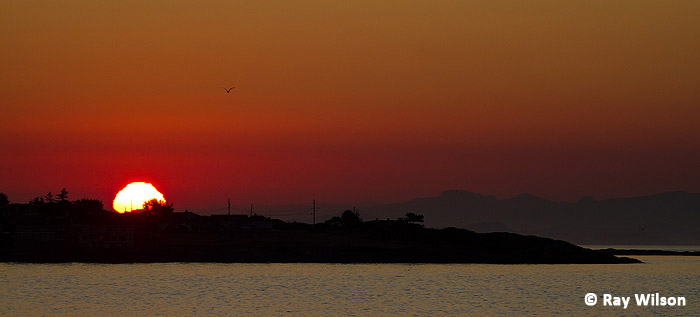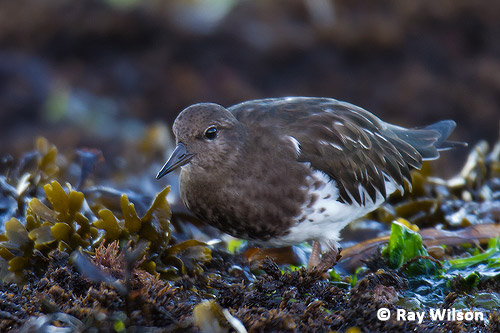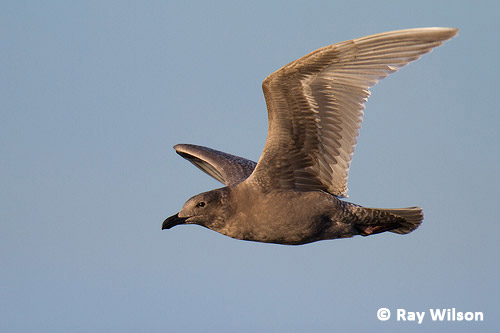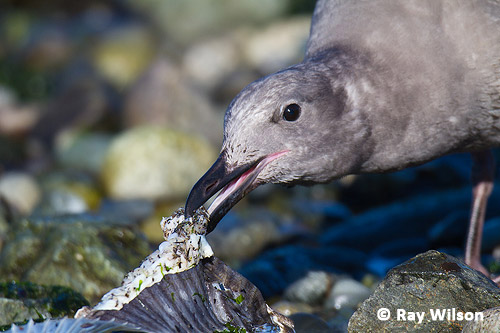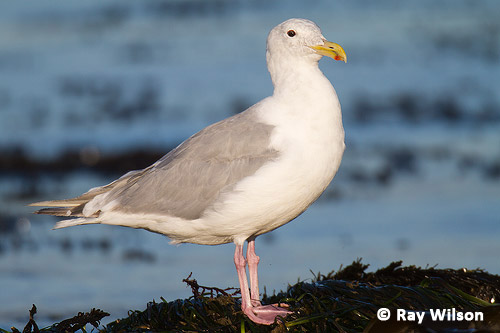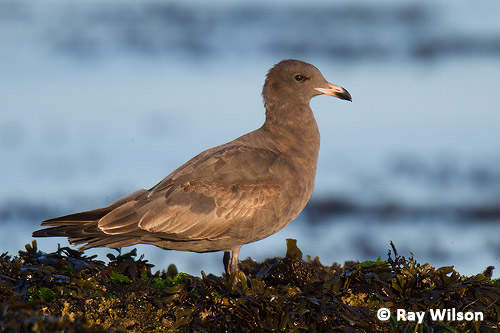
- Home
- Workshops / Tours
- Diary / Blog
- Galleries
- Foreign Trips
- Tasmania 2016
- NE Queensland 2016
- Western Alps 2016
- NE Spain 2016
- Australia's Wet Tropics 2015
- Australia's Top End 2015
- SW Australia 2015
- Switzerland 2015
- Andalucia 2015
- Belize 2015
- Australia 2014
- Switzerland 2014
- Belize 2014
- Bahama Islands 2014
- Switzerland 2013
- Ecuador 2012-2013
- Florida 2011-2012
- Vancouver Island 2011
- Australia 2010
- Peru 2008
- Bulgaria 2007
- Lesvos 2006
- California 2006
- New Zealand 2005
- Extremadura 2005
- Goa, India 2004
- The Gambia 2003
Vancouver Island, Canada
7th-25th September 2011
Clover Point
sunrise
The small rocky promontory of Clover Point in southern Victoria is a good place at low tide for photographing Black Turnstones, Black Oystercatchers and a variety of gulls. As with many places near the city I visited at sunrise to try and get a couple of hours peace and quiet before the place was over-run with dog-walkers.
Black Turnstone (Arenaria melanocephala)
The Black Turnstones tend to feed close to the tide line so they are often not visible if you stand too far from the water line and it may be necessary to walk over quite an expanse of wet and slippery rocks to get into a decent position to photograph them. While trying to get into position, be careful not to disturb the Black Oystercatchers and roosting gulls. If the gulls or Oystercatchers take flight, the chances are the Turnstones will be spooked too.
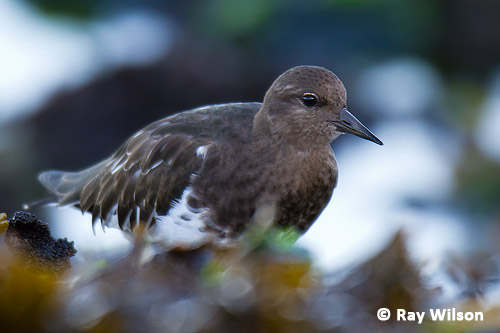
Black Turnstone (Arenaria melanocephala)
Black Turnstones breed in Alaska and spend the winter on rock coast from northern British Columbia all the way south to Baja California.
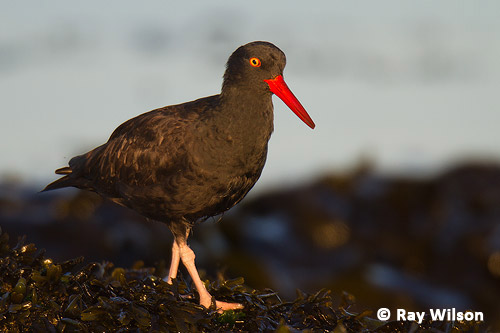
Black Oystercatcher (Haematopus bachmani)
Black Oystercatcher has a similar distribution to Black Turnstones but is less migratory and is resident along most of the western shore of North America, with only the most northern populations moving south for the winter.
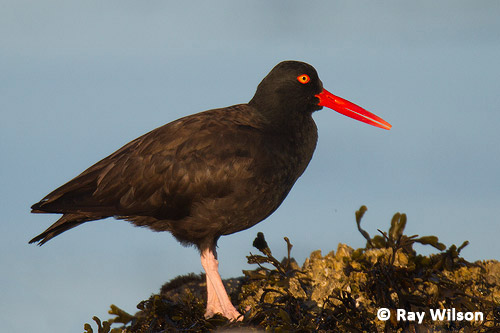
Black Oystercatcher (Haematopus bachmani)
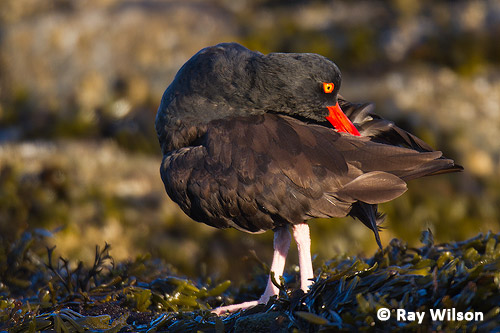
Black Oystercatcher (Haematopus bachmani)
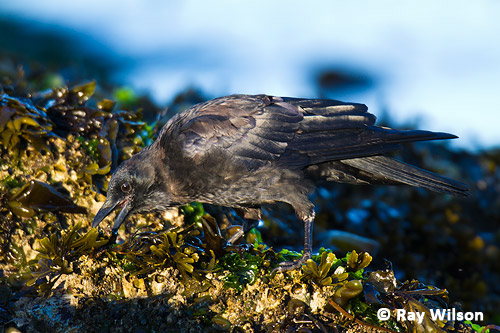
Northwestern Crow (Corvus caurinus)
Although averaging slightly smaller, Northwestern Crows are virtually identical to American Crows and can only really be identified in the field on the basis of their range. Northwestern Crow is the only small black crow that occurs on the Pacific coast of Canada and Alaska. It is abundant on Vancouver Island.
juvenile Glaucous-winged Gull (Larus glaucescens)
Another abundant bird with a predominantly northern distribution is the Glaucous-winged Gull. The juvenile below was feeding on the rotting carcase of a salmon that had been washed up onto the beach by the tide.
juvenile Glaucous-winged Gull (Larus glaucescens)
adult Glaucous-winged Gull (Larus glaucescens)
The smaller California Gull was the commonest gull in the low tide roost.
adult winter California Gull (Larus californicus)
Heermann's Gull is far rarer and southern Vancouver Island, where it occurs in small numbers as an overshoot migrant, is pretty much at the northern limit of its range. The juvenile below was one of four present in the roost on the morning I visited.
juvenile Heerman's Gull (Larus heermanni)
Ray Wilson owns the copyright of all images on this site.
They may not be used or copied in any form without prior written permission.
raywilsonphotography@googlemail.com
